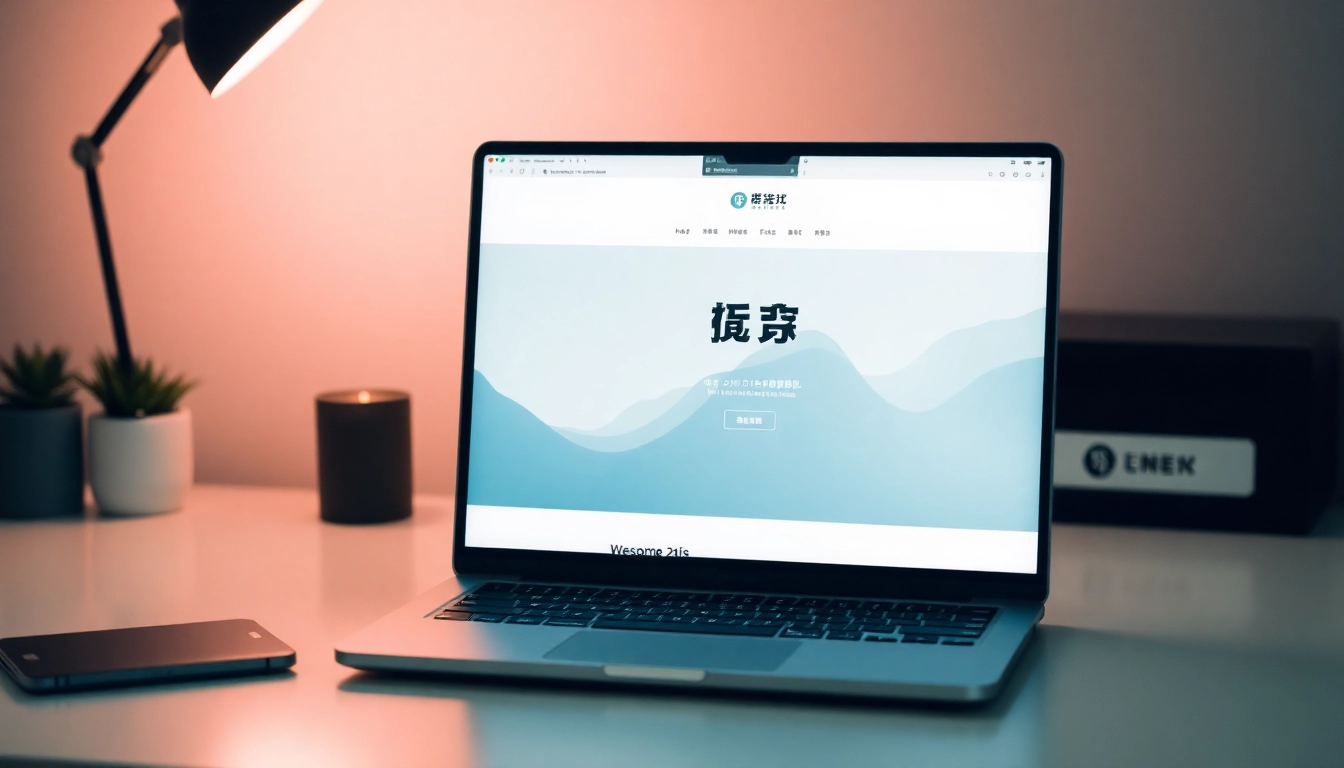Understanding Competitive Intelligence
Definition and Importance of Competitive Intelligence
Competitive intelligence (CI) refers to the systematic gathering, analyzing, and distributing of information about competitors and market conditions to inform decision-making and strategic planning. It encompasses understanding not just what competitors are doing, but also why they are adopting certain strategies and how they are expected to evolve. By leveraging competitive intelligence services, businesses can enhance their strategic positioning, mitigate risks, and identify new opportunities for growth.
The importance of competitive intelligence lies in its ability to transform raw data into actionable insights. In today’s fast-paced business landscape, where competition is fierce and market dynamics are constantly shifting, organizations that are adept at leveraging CI can outperform their rivals. These insights can guide marketing strategies, product development, pricing models, and customer engagement efforts, ultimately leading to improved performance and profitability. Utilizing competitive intelligence services can facilitate comprehensive analyses that reveal competitive threats and opportunities.
The Role of Competitive Intelligence Services in Business
Competitive intelligence services play a critical role in helping businesses understand their competitive landscape. These services can provide in-depth market analysis, competitor profiling, pricing strategies, and customer insights. By employing these services, companies can gain the necessary knowledge to make informed decisions and respond proactively to changes in the market.
For instance, a service provider may conduct primary and secondary research to evaluate competitors’ strengths and weaknesses, track market trends, and identify customer sentiment. This information is crucial for businesses looking to launch new products or enter new markets, as it helps in crafting strategies that are informed by real-world data rather than assumptions. More importantly, competitive intelligence can help companies avoid potential pitfalls and capitalize on emerging trends ahead of their competitors.
Key Components of Effective Competitive Intelligence
An effective competitive intelligence strategy comprises several key components:
- Data Collection: Gathering relevant data from various sources, including market reports, industry publications, competitor websites, and social media.
- Analysis: Analyzing the collected data to derive insights regarding market conditions, competitive strategies, and potential threats.
- Distribution: Communicating findings to decision-makers within the organization to ensure that strategic choices are informed by accurate and timely information.
- Monitoring: Continuously observing competitors and market conditions to identify changes that may affect business strategy.
By focusing on these components, businesses can create a robust competitive intelligence framework that enhances their ability to navigate complex market landscapes and make data-driven decisions.
Types of Competitive Intelligence Services
Market Analysis and Customer Insights
Market analysis involves evaluating the external market environment to gain insights into industry trends and consumer preferences. This type of competitive intelligence service helps businesses understand the dynamics of their industry, including factors such as market size, growth rate, and competitive structures. For example, tools that analyze online customer reviews can provide businesses with insights into customer satisfaction and unmet needs, guiding improvements in product offerings.
Moreover, understanding customer insights is crucial for tailoring marketing strategies. By analyzing customer behavior, preferences, and pain points, businesses can optimize their offerings and enhance customer engagement. For instance, a company may realize through CI practices that customers value sustainability, guiding them to highlight eco-friendly product features in their marketing campaigns.
Competitor Benchmarking and Pricing Strategies
Competitor benchmarking involves systematically comparing a company’s products, services, and performance metrics with those of its competitors. This process identifies areas for improvement and highlights competitive advantages. For example, a thorough price analysis may reveal that a business’s pricing strategy is significantly higher than that of its main competitors, prompting a reevaluation of pricing structures to ensure competitiveness in the market.
Pricing strategies informed by competitive intelligence can involve techniques such as price matching, penetration pricing, or value-based pricing, depending on market conditions and competitor behaviors. For instance, if a competitor lowers its prices, a business can respond strategically by offering discounts or enhancing value propositions, thus maintaining market share and customer loyalty.
Strategic Intelligence and Risk Management
Strategic intelligence is a broader function of competitive intelligence that focuses on long-term business planning and risk identification. By understanding market trends, potential regulatory changes, and competitor movements, organizations can strategically position themselves to avoid risks and capitalize on opportunities before they become apparent to the competition.
Risk management, in the context of competitive intelligence, involves assessing potential threats from competitors and the market at large. By understanding the competitive landscape, businesses can devise contingency plans, ensuring that they can respond swiftly to unexpected challenges, such as new entrants in their market or disruptive technologies that could impact their business model.
How to Choose the Right Competitive Intelligence Service
Evaluating Service Providers
When considering competitive intelligence services, evaluating potential service providers is crucial. Businesses should look for firms that demonstrate a deep understanding of their specific industry and have a proven track record in delivering actionable insights. Key factors to consider include:
- Experience: Look for providers with experience in your industry and a history of successful projects.
- Methodology: Understand their data collection and analysis methodologies to ensure they align with your business’s values and expectations.
- Client Testimonials: Seek feedback or case studies from previous clients to gauge the effectiveness and reliability of the service.
Choosing the right provider is critical as it can significantly influence the quality of the insights and the overall utility of the service for your business strategy.
Understanding Your Business Needs
Defining business needs is a crucial step in selecting competitive intelligence services. Each organization has unique objectives, and understanding these can help narrow down the appropriate services. For instance, a startup may prioritize market entry strategies, while an established firm may focus more on competitor benchmarking and innovation tracking.
Engaging internal stakeholders during this process can help in identifying appropriate goals for CI activities. It is important to explore questions such as: What insights are most important to your strategic goals? Are we looking to optimize pricing, enhance product features, or improve customer satisfaction? Through this clarity, businesses can seek services that align best with their defined objectives.
Assessing Deliverables and Reporting
Another vital factor in selecting a competitive intelligence service is assessing the deliverables provided. Service providers should clearly define what insights will be delivered, how they will be shared, and the frequency of these reports. Accessible, well-timed, and actionable reporting is essential for businesses to turn insights into strategies effectively.
For example, regular dashboards or analytical reports that synthesize findings can assist companies in making quicker decisions and adapting to market changes. Additionally, consider whether the provider offers consultation services to interpret the data and develop action plans based on the insights gained.
Implementing Competitive Intelligence in Your Business
Integrating Insights into Decision-Making
Once competitive intelligence has been gathered and analyzed, integrating these insights into the organization’s decision-making processes is crucial. Businesses should foster a culture where data-driven decision-making is valued and embedded within their operations.
This can involve establishing routines for reviewing CI findings during monthly strategy meetings or utilizing dashboards for real-time decision support. Ensuring that insights are continuously updated and incorporated into business strategies enables organizations to maintain their competitive edge.
Measuring Impact and Success
To gauge the effectiveness of competitive intelligence efforts, organizations need to implement metrics that measure the impact of CI on business outcomes. Relevant metrics can include:
- Market Share Growth: Tracking deviations in market share post-implementation of CI-driven changes.
- Customer Satisfaction Scores: Monitoring feedback and satisfaction levels before and after adjustments based on CI insights.
- Sales Performance: Analyzing sales data to identify correlations between CI insights and sales growth.
By systematically measuring these metrics, businesses can refine their CI strategies and demonstrate the value that competitive intelligence brings to their operations.
Continuous Improvement and Adaptation
The landscape in which businesses operate is constantly evolving, making continuous improvement in competitive intelligence practices essential. Organizations must be willing to revisit their strategies, methodologies, and the relevance of their CI efforts regularly.
This may involve adopting new technologies for data analysis, updating monitoring processes, and refining KPIs to better reflect the changing market dynamics. Continuous improvement emphasizes agility, promoting the ability to adapt quickly to unexpected challenges or opportunities.
Future Trends in Competitive Intelligence Services
The Impact of Technology on Competitive Insights
Technology is reshaping the way competitive intelligence is conducted, enhancing the ability to gather and analyze large datasets. The integration of artificial intelligence (AI), machine learning, and big data analytics allows businesses to process vast amounts of information more efficiently than ever.
Emerging tools can automate the data collection process, identify patterns, and even predict future trends, significantly reducing the time and resources needed to gather insights. Companies that leverage these technologies can gain a substantial edge over those relying solely on traditional methods.
Ethical Considerations in Competitive Intelligence
As competitive intelligence practices evolve, maintaining ethical standards is paramount. CI professionals must navigate the subtle line between ethical research and unethical practices. Organizations need to establish clear protocols and training to ensure that their CI activities comply with legal standards and ethical norms, minimizing the risk of reputational damage or legal repercussions.
Transparent processes, respect for privacy, and compliance with regulatory frameworks not only uphold ethical practices but also build trust with customers and stakeholders. Companies that prioritize ethical competitive intelligence can enhance their brand reputation and foster stronger customer relationships.
Preparing for Changes in Market Dynamics
The future of competitive intelligence service lies in preparing and adapting to rapid changes in the market. Economic shifts, technological advancements, and evolving consumer preferences are just a few factors that can drastically alter market dynamics.
Businesses that proactively track trends and adjust their strategies accordingly stand a better chance of thriving in unpredictable environments. Fostering a flexible CI framework capable of adapting to new information is essential for maintaining a competitive advantage in tomorrow’s market.



